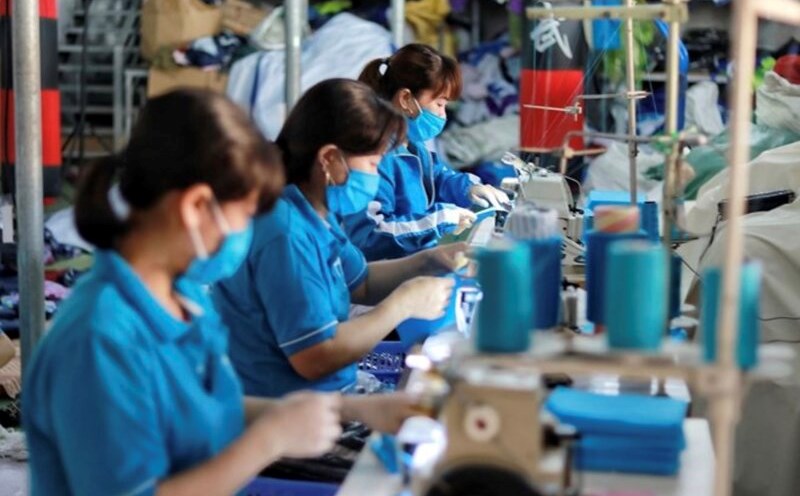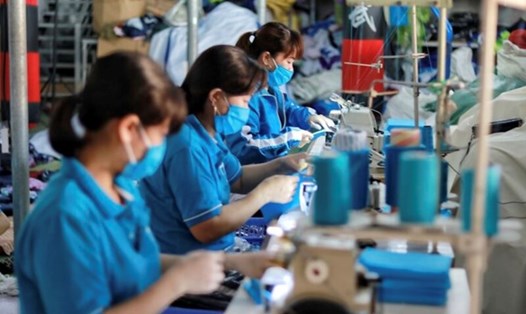Flexible and correct monetary policy in the first quarter of 2025
In the context of the global economy under pressure from inflation, trade conflicts and high interest rates, the State Bank of Vietnam is still determined to operate a proactive, flexible and cautious monetary policy. Thanks to that, GDP in the first quarter increased by 6.93% - the highest level in the past 5 years; inflation was controlled below target; credit focused on supporting economic recovery.
The operating interest rate remains unchanged, interbank liquidity is abundant with overnight interest rates ranging from 3.5% - 4.3%/year. The average lending interest rate decreased by about 0.4 percentage points, contributing to reducing costs for businesses.
From the business perspective, Mr. Le Van Phuong - General Director of Lam Son Sugarcane Joint Stock Company - said that bank credit has long been an essential resource, not only helping businesses maintain operations but also promoting in-depth investment, technology development and expanding production scale.
Mr. Phuong said that over the years, Lam Son sugar Nut has maintained close cooperative relationships with major banks such as VietinBank, MB, Techcombank, ACB..., notably VietinBank Thanh Hoa branch with a relationship lasting more than 30 years. Not only stopping at credit granting, banks also provide flexible financial solutions, supporting businesses to optimize production and business activities.
On the side of the bank, sticking to the direction of the Government, the SBV, the local government, Mr. Le Duy Hai - Deputy General Director of VietinBank shared that, in 2025, VietinBank has both attracted capital and promoted credit growth in the field of production and business, priority fields, economic growth drivers, steady growth right from the first months of the year and keeping the average level of the whole industry.
Mr. Hai said: "We always reserve preferential capital to support businesses, individual customers and business households; adjust the general lending interest rate floor down and issue a series of credit programs with competitive interest rates balanced from the bank's commercial capital with interest rates 2-3% lower than the normal lending interest rate per year, and also develop preferential fee policies to support businesses;..."
According to the Standing Deputy Governor of the SBV Dao Minh Tu, the goal of 16% is equivalent to about 2.5 million billion credit will be pumped to the market in 2025. In case the economy has achieved a higher growth - up to 10% - the total amount of credit capital may be up to 3 - 3.2 million billion, showing the weight that the banking system is shoulder in the capital allocation role for the economy.
Strong pumping credit, stable exchange rates - policies are "absorbing" the economy
According to the announcement of the Statistics Office (Ministry of Finance), as of March 25, 2025, the total payment method increased by 1.99% compared to the end of 2024. This increase is both enough to meet capital needs for production and business, and does not create great pressure on inflation - which is being well controlled.
Meanwhile, the exchange rate - which is the most vulnerable point in policy management - has been controlled calmly but not passive. At the beginning of the year, although USD in the world strongly increased, the Vietnamese dong cost was only less than 1% compared to the beginning of the year, according to data from the SBV.
The trade surplus in the first quarter reached more than 3 billion USD - a fundamental factor that helps the exchange rate remain under control. However, the foreign exchange market still has times of strong fluctuations when information from international sources appears. In those situations, the SBV demonstrated its role as a "pay stopping act", ready to intervene through foreign exchange sales channels, open markets or interbank interest rate regulation.
In the first three months of the year, monetary policy has fulfilled its role in maintaining macroeconomic stability, supporting growth, and controlling inflation. But the remaining journey of 2025 will not be simple. The State Bank has proven its leadership through many difficult periods. However, we need to flexibly coordinate monetary policy and fiscal policy, promoting internal growth drivers such as consumption, public investment, etc.
With a credit growth of nearly 4% in the first quarter, the banking system still has many things to do to reach the goal of 16% of the year. The challenge is not only pushing capital out quickly, but also the right object, the right industry and the right needs. The control of credit flows into high -end real estate and securities should continue to maintain to avoid the risk of bubbles.
The State Bank's Standing Deputy Governor Dao Minh Tu assessed that in the context of many fluctuations in the world economy, the economic growth target of 8%, aiming for 10% or more will be a challenging task for the banking industry.
Over the years, with the view of managing monetary and credit policies, the banking industry has been very determined and has had many reforms. Banks apply technology very quickly to credit activities, helping to reduce costs significantly compared to before. Banks always play a "supporting" role for the economy in the issue of capital supply, especially when the capital market, the corporate bond market... have not developed as expected.
Mr. Dao Minh Tu said that with the need for an additional VND2.5 million billion to lend to the economy, the State Bank will have many solutions to meet the capital needs of businesses.
Regarding interest rates, in the past 2 years, the State Bank has always made efforts in management work, keeping interest rates stable, currently the index and safety coefficient are used to the maximum by most commercial banks. Deputy Governor Dao Minh Tu said that bank credit will continue to focus on priority areas such as investment, export, production and business, especially focusing on consumer credit such as purchasing social housing, contributing to promoting and actively supporting economic growth.













